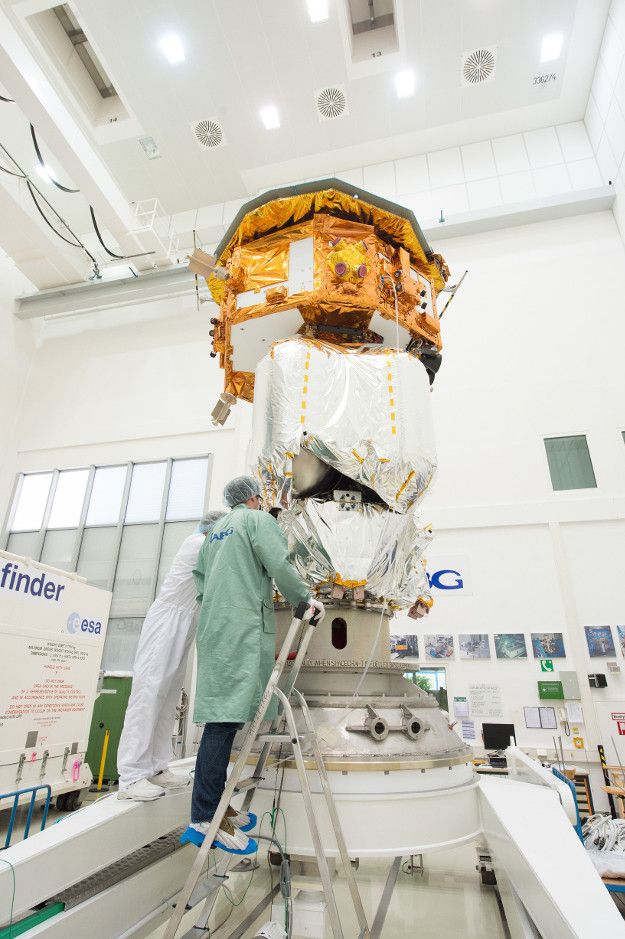Sep 3, 2015
NASA and the Makers of the Hoverboard Are Bringing You Tractor Beams
Posted by Shailesh Prasad in categories: space, transportation
The now-famous hoverboard company will work over the next few years to tug NASA’s tiny satellites.
The now-famous hoverboard company will work over the next few years to tug NASA’s tiny satellites.
Great news. It’ll be fascinating to see what they discover.
In the distant reaches of the Universe, exploding stars and supermassive black holes are bending the very fabric of spacetime. It’s hard to wrap our brains around such tremendous forces, but we may be able to quantify them, in the form of gravitational waves. A new European Space Agency mission marks humanity’s first bold attempt to do so in outer space.
This fall, the ESA’s LISA Pathfinder will be blasted into space on a course for the L1 Lagrange point. Situated nearly a million miles from Earth, it’ll begin pilot-testing fundamental technologies for the detection of elusive gravitational waves. The miniature science observatory bid farewell to the public this week, on display at a test centre in Ottobrunn, Germany for the last time before its long journey.

Intel today announced plans to invest $50 million over the next ten years as part of a quantum computing push to help solve problems such as “large-scale financial analysis and more effective drug development.”
But despite the ambitions and huge cost of the project, company vice president Mike Mayberry admits that “a fully functioning quantum computer is at least a dozen years away.”
The money will be channeled through QuTech, the quantum research institute of Delft University of Technology, and TNO, with Intel additionally pledging to commit its own “engineering resources” to the collaborative effort.
Intel has taken the lid off its next-generation Skylake mobile chips. Fat L4 caches are coming to a lot more mobile hardware.
Auricyte LLC, an Indiana University startup that aims to cure hearing loss by growing human stem cells into functioning hearing cells, is among five companies being honored Thursday for being named “Best in Show” at the recent Innovation Showcase 2015.
Auricyte, an Indiana University startup that aims to cure hearing loss by growing human stem cells into functioning hearing cells, was named among the five top companies at Innovation Showcase 2015.

Ever heard of 3-D printing? Besides, if humanity had followed this guys advice, MIT or not, we would have never left Africa. Never built a new village, town, or city. Never gone to the moon — and we DEFINITELY would never have created a place like MIT AT ALL.
Life is messy, painful, rough and often unforgiving, but taking risks is part of our collective species identity. To succeed sometimes we have to fail, and if that’s what happens with this endevor then, at the very least we’ll know what NOT to try next time.
Continue reading “Mars One Mission Called 'Unsustainable,' And Here's Why” »
You may have heard of precision medicine in the news, but what actually is it, and what could it mean for the future of healthcare?
In the past, medicine was geared for the masses and was applied to large numbers of people, on the basis of average effectiveness. If a particular substance was ineffective on 10% of the population, it could still pass through and be prescribed anyway. Before genomics, it was tricky to understand or postulate why people had such varied responses to medication, but now we have the right tools — things are changing.
While all humans have extremely similar genes in percentage terms, there are distinct differences in each of us that create our particular vulnerabilities and characteristics. We also respond differently to many treatments; a cure for one might be mediocre for another. This is particularly true for cancer. With the Precision Medicine Initiative taking off, taking into account genetics, lifestyle and environment is beginning to give us an edge — making medicine more accurate and effective.
The brain of a honey bee uses about ~0.1mW of power. While the brain of a self driving car ~100W. That’s a power factor of about one million. We’ve got a very long way to go.
V1.0: A Network Edition is here! http://ow.ly/RAI4k.
Nanotechnology and 3-D printing are two fields that have huge potential in general, but manipulating this technology and using it in biology also has tremendous and exciting prospects. In a promising prototype, scientists have created micro-robots shaped like fish which are thinner than a human hair, and can be used to remove toxins, sense environments or deliver drugs to specific tissue.
These tiny fish were formed using a high resolution 3-D printing technology directed with UV light, and are essentially aquatic themed sensing, delivery packages. Platinum particles that react with hydrogen peroxide push the fish forward, and iron oxide at the head of the fish can be steered by magnets; both enabling control of where they ‘swim’ off to. And there you have it — a simple, tiny machine that can be customised for various medical tasks.
In a test of concept, researchers attached polydiacetylene (PDA) nanoparticles to the body, which binds with certain toxins and fluoresces in the red spectrum. When these fish entered an environment containing these toxins, they did indeed fluoresce and neutralised the compounds.